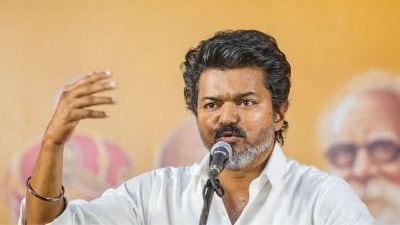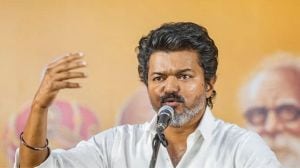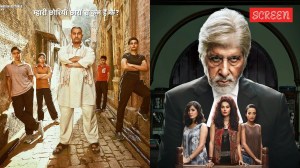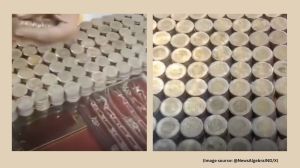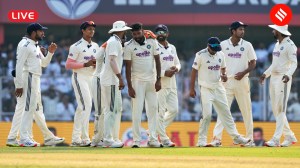Sundance 2022: Grand Jury Prize winner Shaunak Sen’s sublime and urgent documentary film All That Breathes is a kite’s-eye view of Delhi pollution
The only Indian film at the Sundance Film Festival, that's won the top prize in World Cinema Documentary Competition, pits Delhi's toxic air against two brothers who give their all to make black kites fly
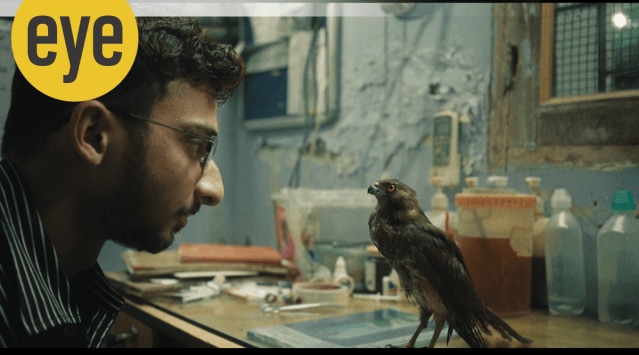 Wingman Salik with a baby black kite in a still from the documentary All That Breathes
Wingman Salik with a baby black kite in a still from the documentary All That Breathes If in his last film Cities of Sleep (2015), documentary filmmaker Shaunak Sen showed us “class” by training the hand-held lens on Delhi’s night shelters and those who sleep on its traffic dividers, in his latest, All That Breathes, the illustration of the Other gets sublime and urgent. The subject of inquiry are two brothers and their love affair with a species, the black kites (Milvus migrans), that they resuscitate. And how the human and “more-than-human” survive the “all-enveloping lamina of ecological hostility” and toxicity — in the air, on the ground.
The only Indian film to compete at this year’s fully virtual Sundance Film Festival, the US, has picked up the top award, the Grand Jury Prize. Sen’s film was in the World Cinema Documentary Competition, the same category which, last year, saw Rintu Thomas and Sushmit Ghosh’s powerful documentary Writing with Fire, on Khabar Lahariya and Dalit women journalists, pick up two awards; the latter is now headed to the 94th Academy Awards in March.
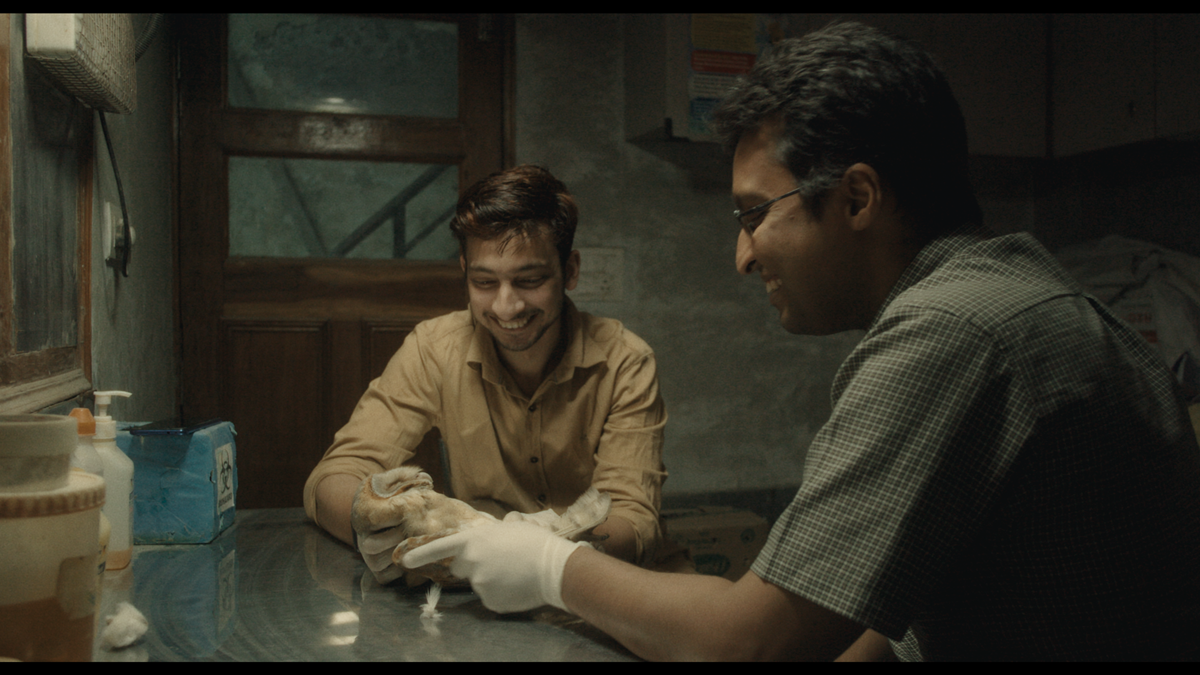 Salik (left) and Saud nursing a kite in a still from the film
Salik (left) and Saud nursing a kite in a still from the film
Pure issue-based “monolinear messaging” is not for Sen. His long-form, creative documentary relies on revelatory slow pans, languorous tilts, and focus shifts. Sen’s gaze compresses and decompresses to render the scientific/natural poetic. The camera pans on to a dumping ground, dilates the filth, amplifies the squeaks of scuttling rats, the ominous scene-setting is reminiscent of a fairy tale gone wrong. It magnifies, matter-of-factly, the non-human, micro life, peripheral species, the invisibilised. Flies quench their thirst from a puddle that reflects the human world in motion, a tortoise watches the traffic go past. The visual grammar has been rendered by ace cinematographer Ben Bernhard, with Riju Das and Saumyananda Sahi wielding the lens too.
The kites, in Das’s big close-ups, like students in attendance in a classroom, are social rejects that feed on human refuse (at Ghazipur landfill, Barapullah sewer, etc.). Like microbiomes, they keep the city’s gut healthy. They have adapted to urban life (use cigarette stubs as parasite repellent), but are more often than not rejected. The brothers were once turned away by the Jain-run Charity Birds Hospital, in Old Delhi, which doesn’t treat “non-vegetarian” birds of prey. As Muslims, the brothers, who eat meat, took it personally, as they told The New York Times in a 2020 article.
Thematically, shrinking spaces undercut the form (near-absence of funding to exhibition support to docu-films in India) and content (the brothers run a derelict bird clinic from their home’s basement alongside a soap-dispenser business). “The salient bipolarity of the space was super cinematic to me, where heavy metallic cutting machines share space with these majestic birds being treated. The particular (brothers, their relationship with raptors) became the lens to look at the broader (contemporary social history, the city’s zeitgeist),” says Sen, 34, from the US.
While the brothers bespeak that Piyush Mishra song Jaisi bachi hai waisi ki waisi bacha lo yeh duniya/Apna samajh ke apno ki jaisi utha lo yeh duniya, the documentary’s photo-finish is its music. Composer-instrumentalist Roger Goula’s cadences are hypnotic, with melodies (classical, orchestral) that palliate and electronic distortion that amplify the dystopia.
 Feeding meat to kites earns sawab (religious credit, in Islam), in a still from the film
Feeding meat to kites earns sawab (religious credit, in Islam), in a still from the film
“As Delhi’s air changed, so did its metabolism… Delhi is a gaping wound, and we are trying to put a small Band-Aid on it,” says one brother in the film. Kite-brothers Nadeem Shehzad, 44, and Muhammad Saud, 40, with their young wingman Salik Rehman, have been nursing injured birds — over 20,000 in two decades. First, from their basement, “with no support”, in “inhospitable conditions” (heat, costly meat, mincer malfunctions), and then from a clinic, Wildlife Rescue, they built at their home in north-east Delhi’s Wazirabad village. They annually rescue and rehabilitate over 2,000 raptors and water birds — this unflinching care-giving brings them sukoon (peace), like feeding meat to kites earns them sawab (religious credit, in Islam).
The brothers are a centre which if it doesn’t hold, things will fall apart. They “fulfill a crucial role, of cohabitation and (mitigating) threat,” says Sen. They also put people at ease, by sharing practical knowledge. “You don’t care for things because they share the same country, religion or politics. Life itself is kinship. We’re all a community of air,” says a voice-over in the film.
Structurally, it’s a triptych that inflects the world of the brothers (tripod-ed slider shots, not usually deployed to show human behaviour), the non-human life, and the brothers’ voiceover, lyrical throwbacks to their past. It’s peppered with evocative shots (a sewer looks like a river, the animals allegorical) and happy accidents (a kite flies away with Salik’s glasses). Salik is amused, his dismay abated by KL Saigal crooning Haye haye yeh zaalim zamana in the back. His innocence and curiosity is a comic relief to the brothers’ stoic personae. The brothers fight not for “financial reason, emotions or ego, but because of what’s happening in the skies, to the birds,” Saud says in the film.
“Delhi, to say it clichédly, has become apocalyptic, with birds falling off the skies. Aman Mann (co-producer) and I looked for people in the city who have a profound relationship with birds,” says Sen, “Even before we met the characters, I had an ineffable sense of the visual text and texture I wanted to make. Growing up in Delhi, one is constantly witnessing the ecological (transmutation) visually, the monotone skies now, the black lazy-dots gliding in the skies, constantly breathing in noxious air, inhaling atmosphere that are no longer conducive for your well-being.”
The black kites, Least Concern (on the IUCN Red List) species, “have been a successful urban creature” in Delhi. Their “numbers, nesting habitat, instances of human-bird collisions have been increasing,” says Sen. They are broken and fractured — the reasons tangentially hinted at in the film — ironically by paper kites’ glass-coated manja (thread), or the smog blinding them as they collide into buildings, or their nests are destroyed. “I didn’t want to make a nature documentary or wildlife film, primarily because we didn’t have the skill set,” says Sen, who caught COVID-19 during the shoot.
 Director Shaunak Sen
Director Shaunak Sen
In the aural-visual sensorium he curates, reminiscent of the Italian documentary filmmaker Gianfranco Rosi’s style, Sen has translated the city’s palpable claustrophobia onto the screen, with an unhurried thairaav, no loud pronouncement. It’s a Delhi disassembled, “a city I know most intimately; what’s a better laboratory ecologically than Delhi?” asks Sen. As white soap foams from the basement morphs into the toxic foam on Yamuna, editors Charlotte Munch Bengtsen, and Vedant Joshi (The Disciple, 2020), have been able to grasp the essence of an unchanging, cataclysmic reality.
Here are cable-wired, gas-chamber skies, there are cheek-by-jowl canopies, air purifier sees red, AQI levels are dinner-time conversation, and “sounds” of “social unrest” “leak in” — social-media disinformation, but more conspicuously, of street protests, appeals of democracy, citizenship, on loudspeakers, news channels, phone-video forwards. That the brothers have no time for any of it, or for their family, just for their raison d-être: the birds, goes to show how different “people have been responding to the turmoil and turbulence, to a city in churn,” says Sen.






- 01
- 02
- 03
- 04
- 05


